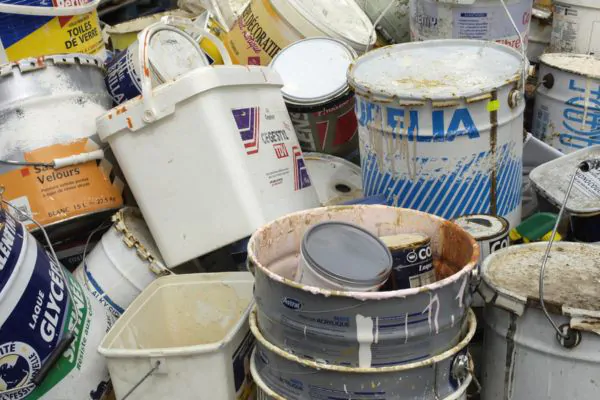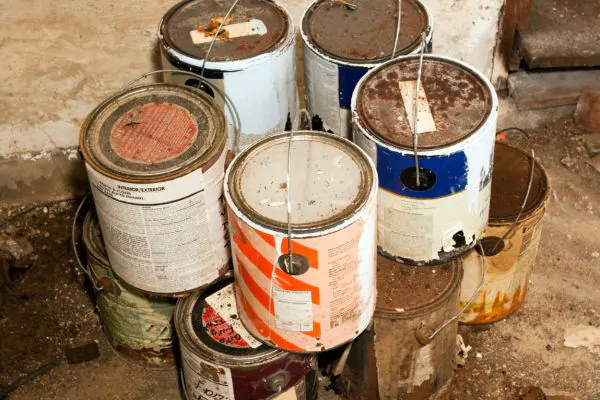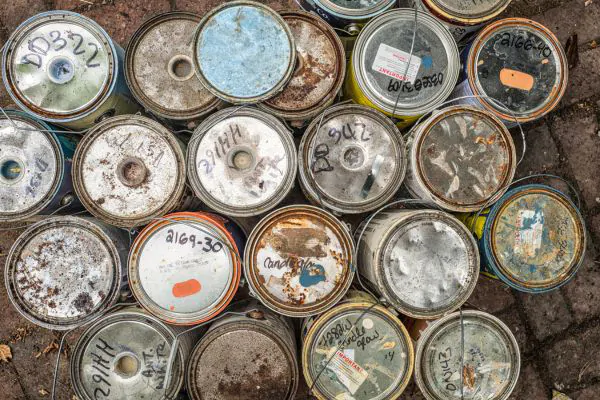
Painting is an essential task for homeowners and business owners, but the leftover paint can pose a problem if not stored and disposed of properly. Paint contains harmful chemicals that can damage the environment and pose a risk to human health if not handled correctly. Therefore, it is crucial to know how to store leftover paint and dispose of it properly. In this blog, we will discuss the steps you need to follow to store and dispose of paint safely.
Proper Storage of Paint
Proper storage of paint is crucial to keep it in good condition for future use. When storing paint, make sure that the container is tightly sealed to prevent air from entering. Air exposure can cause the paint to dry out or develop a skin on top, making it challenging to reuse. Also, ensure that the lid is firmly in place and that the can is stored upright to prevent any leaks.

It is essential to store paint in a cool, dry place, away from direct sunlight and extreme temperatures. Avoid storing paint in areas like garages, attics, or basements, as these areas can get too hot or cold and cause the paint to deteriorate quickly. High temperatures can also cause the paint to separate, making it unusable.
When storing paint, ensure that it is out of reach of children and pets. Children and pets are curious, which could lead to accidentally spilling the paint, resulting in a mess or, worse, a hazardous situation.
Keep your paint in excellent condition for future use and prevent any potential accidents or health hazards by following this set of guidelines.
Tips and Tricks in the Proper Disposal of Paint

To dispose of old paint properly is crucial to protect the environment and human health. The following are some guidelines to follow when disposing of paint:
· Determine the type of paint
The first step in proper paint disposal is to identify the type of paint. Latex paint is water-based and non-toxic, while oil-based paint contains hazardous chemicals.
· Use up as much paint as possible
Use up as much paint as possible before disposing of it. This can be done by using it for touch-ups or painting small projects.
· Donate unused paint
If you have unused paint, consider donating it to a local organization that can use it, such as a school, theater group, or non-profit organization.
· Dry out the paint
To dispose of small amounts of latex paint, allow it to dry out completely by leaving the can open or mixing it with an absorbent material, such as kitty litter or sawdust. Once it is dry, you can dispose of it in the trash.
· Dispose of oil-based paint properly
Oil-based paint is considered hazardous waste and should be disposed of properly. Contact your local hazardous waste facility or recycling center for guidelines on how to dispose of it safely.
· Recycle paint
Many communities offer paint recycling programs. Contact your local recycling center or seek advice from a professional house painter near you to see if they accept paint for recycling.
· Do not pour paint down the drain
Never pour paint down the drain or into the sewer system. This can contaminate water sources and harm aquatic life.
Following these steps will help you properly dispose of paint and prevent harm to the environment and human health.
Effects of Improper Disposal of Paint
Improper disposal of paint can have serious consequences for the environment and human health. Here are some of the dangers caused by improper paint disposal:

1. Contamination of soil and water – When paint is improperly disposed of, it can contaminate the soil and water. The chemicals in paint can seep into the ground and groundwater, making it unsafe for humans and animals.
2. Harm to aquatic life – When paint enters the water, it can harm aquatic life. The chemicals in paint can cause damage to fish, plants, and other aquatic organisms, leading to long-term damage to the ecosystem.
3. Air pollution – The fumes from paint can contribute to air pollution. When paint is improperly disposed of, the chemicals can evaporate into the air, leading to respiratory problems and other health issues.
4. Fire hazard – Paint is flammable and can cause a fire hazard when not disposed of properly. This can be dangerous for both people and property.
5. Legal consequences – Improper disposal of paint is illegal in many areas, and offenders can face hefty fines and legal action.
By following these simple steps, you can help protect the environment and promote the health and safety of yourself and those around you.
Related Post: Ten Key Questions To Ask Your Painting Contractor
Conclusion

Properly storing and disposing of paint is essential to protect the environment and human health. Follow the guidelines outlined in this blog to ensure that you store and dispose of paint safely. If you have any questions or concerns about paint disposal, contact your local hazardous waste facility for guidance. Remember, responsible paint disposal is everyone’s responsibility.





